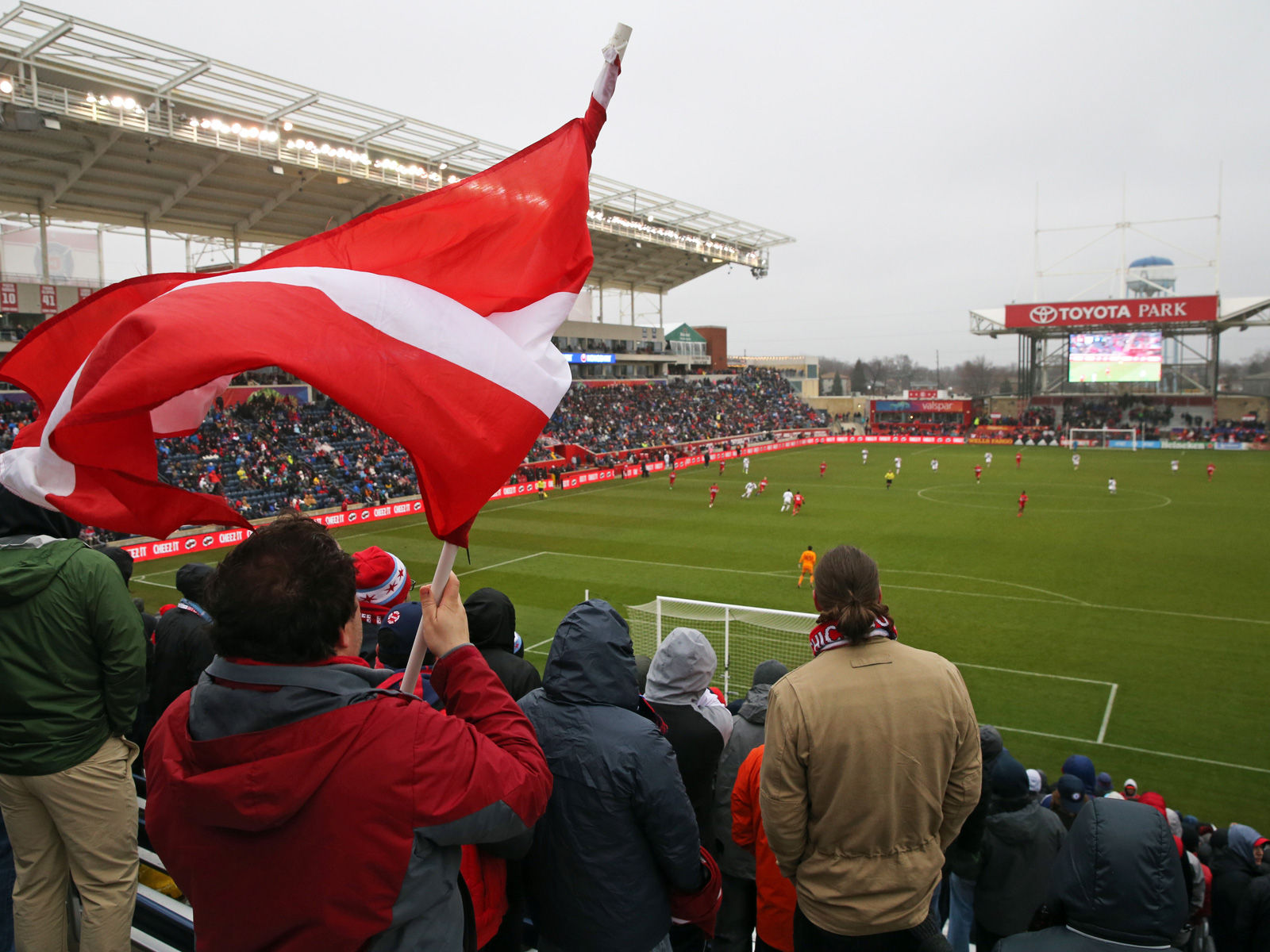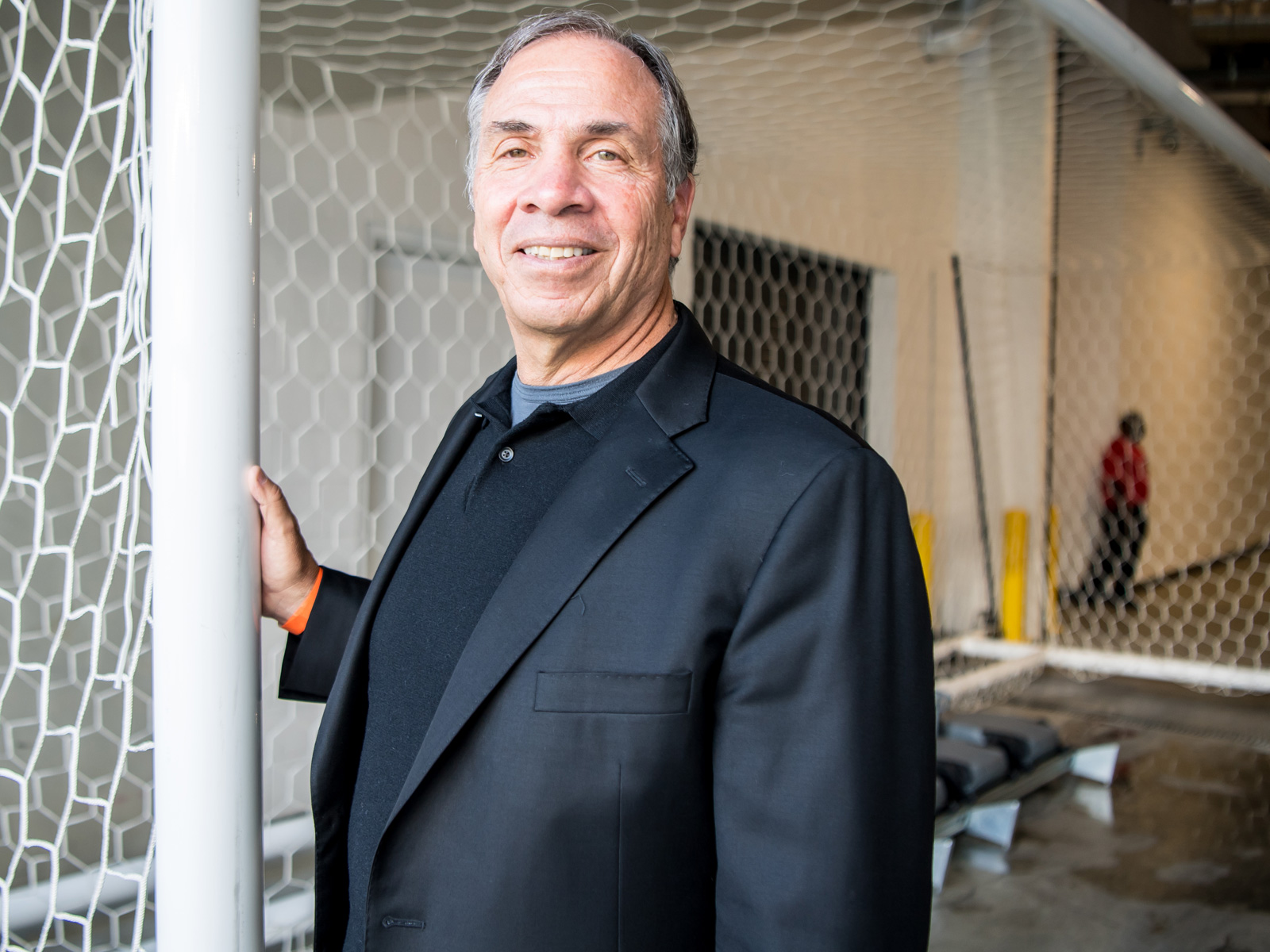MLS's Left-Behind Bigger Markets Start to Feel the Urgency

American soccer wasn’t in the best of moods toward the end of 2017. Let’s take a second and reminisce.
The World Cup qualifying campaign was a spectacular failure. Jurgen Klinsmann had dribbled the defense and hit the perfect cross, then Bruce Arena was there for the emphatic finish. Now there was no head coach and no apparent plan, and the race to follow the beleaguered Sunil Gulati as U.S. Soccer president was shaping up to be nasty. In addition, the Federation was (and still is) being sued in federal court by the NASL, whose champion folded a couple weeks after winning the 2017 title.
Meanwhile, fans across the country were furious as MLS tacitly endorsed Anthony Precourt’s plan to move the Columbus Crew to Austin. The league offered Precourt the out when he bought the team in 2013, then faced a chunk of the public blowback when his intentions came to light.
Everyone was angry. Soccer Twitter was a hellscape, and an undercurrent of angst was noticeable at the MLS Cup final and USSF board meeting that December in Toronto. There, the Crew and the “so much for club and community” gut punch aimed at the city of Columbus was the prevailing topic at Don Garber’s state-of-the-league press conference. It was popular away from the cameras as well.
Aloof, insulated leadership was one of the primary causes for all the aforementioned problems. So it made sense to ask leading up to, and during, that Cup weekend, “Is MLS—are the other owners—aware of just how bad this looks? Could the timing have been worse? Do you see how dramatically this undercuts the league’s public messaging?”
Eighteen months have passed. The Crew have been saved and Precourt is in Austin (and the U.S. has a coach!). But a couple conversations prompted by those questions still resonate, because the message remains relevant even though the Columbus conundrum has been solved. The basic point made by two individuals close to MLS ownership was this: the Crew’s situation was regrettable, and far from ideal. But it wasn’t keeping anyone awake at night. In the end, Columbus and Austin aren’t even among the top 30 American media markets. Combined, they would barely crack the top 20. We sympathize, they noted, but we’re not that focused on choosing between the two. We’ve got much bigger problems.
It’s fun to speculate about expansion, to imagine what Austin FC might become or who among Sacramento, St. Louis, Charlotte, Phoenix, Detroit, Las Vegas, San Diego, or others might join the league. It distracts from games that still don’t mean enough, played by too many interchangeable teams wearing reversible uniforms in a competition where more than half the league makes the playoffs. And it distracts from the very real issues MLS faces in its biggest markets. And make no mistake—it’s the big markets that drive value and national relevance, especially as 2022 and a critical round of TV rights negotiations approach.
Big-market teams don’t have to win every year. But they can’t be anchors that drag down the league. That depresses club value and TV ratings across the board (ask Real Salt Lake, from market No. 30, how often they were on national TV during their 2009-14 heyday).
No. 1 New York remains a puzzle that MLS has never solved. The Red Bulls still haven’t found the consistent traction their beautiful (but hard to reach for many) stadium and consistent-contender status might warrant. NYCFC might be playing on a baseball diamond forever. FC Dallas has an identity, but lacks star power and seems to be waiting for the Metroplex (No. 5) to tilt further north. The Philadelphia Union (No. 4) are too far south and have never won a playoff game, while Houston (No. 7) and San Jose (No. 8) remain less relevant than they should be. Thanks to Chivas USA’s replacement by LAFC and Atlanta United’s 2017 entry, MLS can feel good about markets No. 2 and 9, while Washington, D.C. (No. 6), a long-time issue, finally is looking up with the arrivals of Audi Field and Wayne Rooney.

But Chicago (No. 3) and Boston/New England (No. 10) have been the biggest concerns. They’re two of the country’s traditional sports hotbeds, but neither the Fire nor the Revolution has won a major trophy in a dozen years. Both play in out-of-the-way venues ill-suited for the league MLS is becoming. And worse, both are saddled with frustrated and fatigued fans convinced their owners don’t care.
Both cities represent huge missed and wasted opportunities.
Finally, this month, those owners made overdue statements of intent. Last week, the Desplaines Valley News, which covers the Bridgeview area that is home to the Fire’s SeatGeek Stadium, reported that club owner Andrew Hauptman and his new minority partner, financial services billionaire Joe Mansueto, agreed to spend some $60.5 million to cancel the club’s onerous lease so it could return to Soldier Field. That’s a lot of money to spend just to move into someone else’s stadium, but it speaks to the urgency now facing the Fire, which is dying a slow death in an industrial suburb about 14 miles to the southwest. Chicago has fallen far from its status as an MLS 1.0 flagship. Hauptman and Mansueto needed to do something, and it appears they will.
Fire GM Nelson Rodriguez told reporters last week that there was “no signed agreement,” but he didn’t dispute the main facts of the story. The Bridgeview village board approved an MOU, and once the lease is formally amended, the Fire can start planning to play the 2020 season in downtown Chicago.
Rodriguez met the media May 8. That evening, the Fire dismantled the Revolution, 5-0. The next day, second-year New England coach Brad Friedel was fired. The Hall of Fame goalkeeper obviously was a big name in U.S. soccer circles, but his only managerial experience had come at the junior national team level. Before Friedel, the Revs appointed former player and TV analyst Jay Heaps, who made the playoffs three times in six seasons. They didn’t break the bank for coaches.
Everyone knew owners Robert and Jonathan Kraft also weren’t going to spend big money on big players, and most agreed the environment at Gillette Stadium, where the Revolution are a forgotten stepchild, wasn’t going to attract free agents. So the club ran in place under long-time GM Mike Burns, who didn’t accomplish much and didn’t have much to work with.

Then, on Monday, Burns was fired too. It was surprising news, coming from a club that seemed so married to the status quo. On Tuesday, New England made genuine waves for the first time in forever, hiring the most decorated manager in MLS history, Arena, as head coach and GM. It’s not a shock that Arena, 67, wants to return to work following his World Cup failure. But it’s intriguing that he’d choose New England. It’s probably safe to assume that the man who presided over the league’s two great dynasties—the D.C. United of the late '90s and the LA Galaxy of the early 2010s—needed assurances that he wouldn’t be expected to contend with a glorified USL team.
It’s felt for years like New England wasn’t playing in the same league as the likes of Seattle, Toronto and Atlanta, or even clubs like Kansas City, RSL and Portland. The Revs were either an albatross, or an infuriating reminder of what should be—but isn’t—in a city where pro soccer done correctly would be an intoxicating success.
Getting those cities right—the cities where a successful, ambitious, relevant team would enhance the narrative and carry weight well beyond the borders of its metro area—is as or more important than figuring out whether market No. 28 or 29 should be home to MLS team No. 30. Expansion is a band-aid. MLS is a better league with Cincinnati, Columbus and Austin in the fold. Those are luxuries. But it needs Chicago and Boston, not to mention New York, Houston and Philadelphia. That’s going to take commitment, ambition and money. Perhaps that message is getting across.
